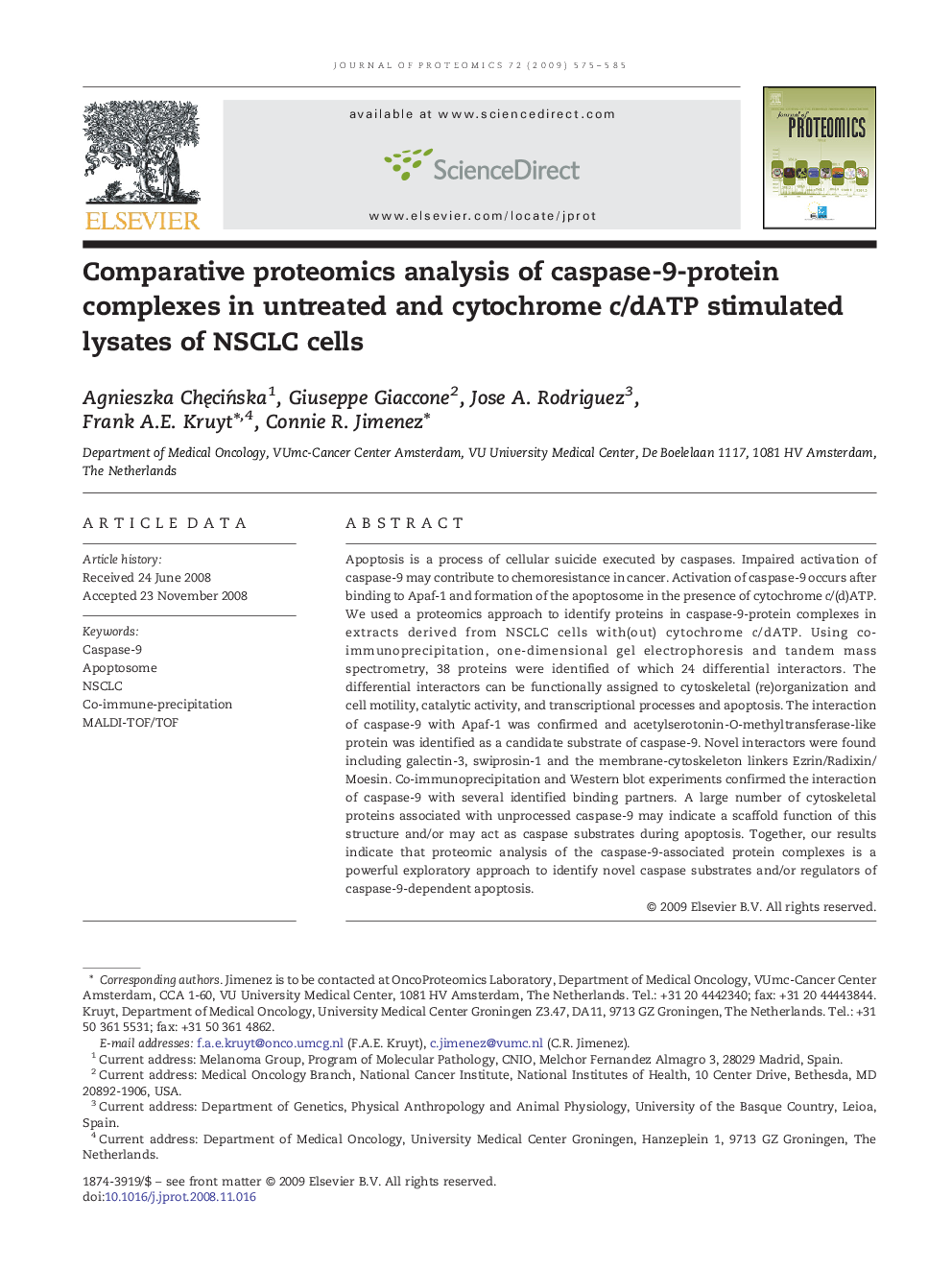| Article ID | Journal | Published Year | Pages | File Type |
|---|---|---|---|---|
| 1225897 | Journal of Proteomics | 2009 | 11 Pages |
Apoptosis is a process of cellular suicide executed by caspases. Impaired activation of caspase-9 may contribute to chemoresistance in cancer. Activation of caspase-9 occurs after binding to Apaf-1 and formation of the apoptosome in the presence of cytochrome c/(d)ATP. We used a proteomics approach to identify proteins in caspase-9-protein complexes in extracts derived from NSCLC cells with(out) cytochrome c/dATP. Using co-immunoprecipitation, one-dimensional gel electrophoresis and tandem mass spectrometry, 38 proteins were identified of which 24 differential interactors. The differential interactors can be functionally assigned to cytoskeletal (re)organization and cell motility, catalytic activity, and transcriptional processes and apoptosis. The interaction of caspase-9 with Apaf-1 was confirmed and acetylserotonin-O-methyltransferase-like protein was identified as a candidate substrate of caspase-9. Novel interactors were found including galectin-3, swiprosin-1 and the membrane-cytoskeleton linkers Ezrin/Radixin/Moesin. Co-immunoprecipitation and Western blot experiments confirmed the interaction of caspase-9 with several identified binding partners. A large number of cytoskeletal proteins associated with unprocessed caspase-9 may indicate a scaffold function of this structure and/or may act as caspase substrates during apoptosis. Together, our results indicate that proteomic analysis of the caspase-9-associated protein complexes is a powerful exploratory approach to identify novel caspase substrates and/or regulators of caspase-9-dependent apoptosis.
